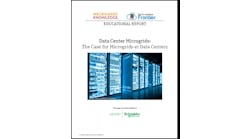Drexel University researchers are developing algorithms to diagnose sick buildings. The tool would automatically sift through volumes of data to identify the source of the problem and avert laborious manual inspection.
Are you feeling too cold right now? Too warm? Is your office’s air a little stale today? On average, Americans spend 90 percent of the day indoors, in a controlled environment. Controlling that environment, at least in the workplace, is the Sisyphean labor of building operators. “Operating” a building requires not only striking the perfect balance between heating, cooling and ventilation, but also repairing and maintaining all of the equipment and systems that allow this magical equilibrium to exist. Endlessly pushing a boulder up a hill might actually be less work. As part of a grant from the U.S. Department of Energy, researchers from Drexel University are working on a cloud-based data analysis tool that could help consolidate these labors while also spotting undetected problems that lead to wasted energy and poor indoor environmental quality.
Jin Wen, PhD, an associate professor in the College of Engineering and co-director of the Building Science & Engineering Group, is developing a powerful tool that can analyze the big data generated by various components in building control systems—thermostats, air and water flow sensors, and energy meters for example—alert building operators when there is a problem, which is often difficult to notice without assistance, and suggest options for fixing it. The goal is not only to have happier building occupants, but also to cut down on the inefficient energy use for which buildings have become notorious.
“Operators deal with a lot of raw data from sensors and control systems, they’re constantly getting updates and fault detection warnings, but there is so much to process that it’s hard to know where to start and what the proper solution is for these problems,” Wen said. “It’s as if a doctor just hands you a list of test results and expects you to interpret them yourself, rather than identifying the source of the problem and advising you as to how to improve your health. We want to process the raw data and give operators a diagnosis and some possible solutions—instead of a mountain of readings and warnings.”
Getting to the cause of a “sick” building—one, for example, that is using an inordinate amount of cooling but always seems to be too warm—is often handled through an arduous manual process of checking and adjusting various parts of the HVAC system and waiting for a temperature change to occur—signaling that the problem has been solved. But in the meantime, it is estimated that building faults, such as malfunctioned components and control systems, are wasting 20-30 percent of a building’s annual energy bill.
Wen’s team wants to use algorithms that could automatically check and analyze the volumes of building data, so operators can be made aware of problems immediately—even before they are noticed by occupants. The team will be putting its program to the test using building control data from Stratton Hall on Drexel’s campus.
“Faults can arise from a number of small problems that lead to a big one,” Wen said. “A lack of cooling could be due to a refrigerant leak, a leaky duct, hot water valve, or malfunctioning fan, but most times it’s actually a combination of several of these problems. Our automated fault detection and diagnosis tool will point operators toward the most efficient solution.”
Efficiency in addressing building control faults is essential to reducing energy waste, which is the overarching goal of the DoE’s Building University Innovators and Leaders Development awards. Drexel is one of three recipients, along with the University of California – Davis and Georgia Institute of Technology, of the $200,000, two-year grant intended to support university research on building energy efficiency and encourage partnerships with industry.
The grant will fund the development of Wen’s automated fault detection and diagnosis tool, which will be compatible with the Department’s open-source building control program VOLTTRON.
It will also be put toward the development of a plan for making the tool a commercially viable product. To do this, Wen is enlisting the help of her industry partner KGS Buildings, a building diagnostic and performance management software company based in Massachusetts, and a student from Drexel’s Close School of Entrepreneurship.
“The challenge of bringing a product like this to the marketplace is showing that it’s easy to use and effective in saving energy,” Wen said. “Building owners need to see that something like this will quickly pay for itself and more in the energy savings that they’ll see when they use it.”
Drexel University is a Philadephia-based research university. This article orginated on the university’s website.





